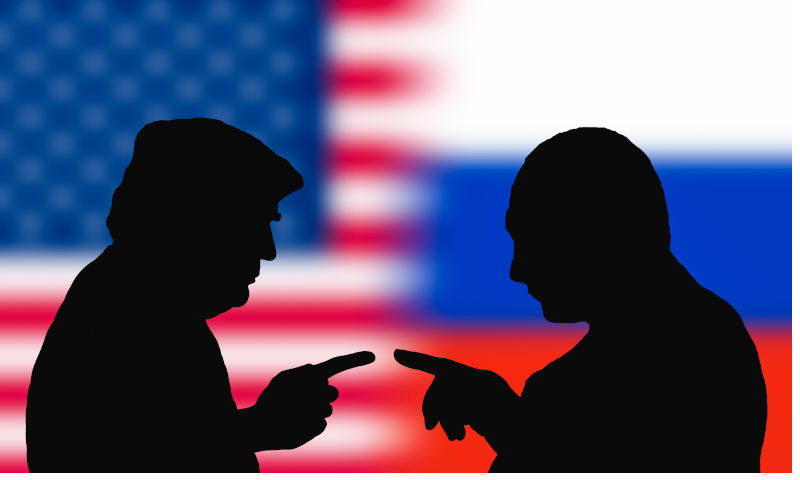For most of the post-World War II period, relations between Europe and the United States have followed a consistent pattern regardless of changes in government on both sides of the Atlantic.
According to Noam Chomsky, “a leading theme throughout the Cold War was the status of Europe: should it subordinate itself to the US within the Atlanticist-NATO framework, the US preference? Or should it become an independent “third force” along Gaullist lines, accommodating Russia within Europe without military alliances from the Atlantic to the Urals?”
For 80 years, the “US preference” has prevailed, notwithstanding serious efforts from continental Europe to forge a different path.
De Gaulle’s proposal was not the only European plan to emerge arguing for a “third way”. Beginning in the late 1960s, former German Chancellor Willy Brandt’s policy of Ostpolitik followed similar lines, as did the last leader of the USSR, Mikhail Gorbachev, who saw in the aftermath of the Cold War an opportunity to build a “common European home”, including a bloc-free continent-wide security system from Lisbon to Vladivostok.
A European “third way” no longer under US control has always been an anathema to Washington’s security establishment. The threat allegedly posed by the USSR, and subsequently Russia, was regularly and ruthlessly exploited by Washington (and London) to prevent Europeans pursuing their own economic and security priorities.
NATO was, in part, established in 1949 to prevent moves by France and Germany towards independent European defence and foreign policies such as the West European Union. The military alliance, which ceded Europe’s defence to the control of the US, has been an effective disciplinary tool for Washington to exercise over its occasionally wayward and independent-minded clients.
In her study of the Euromissiles crises of the early 1980s, Diana Johnstone exposed not only the tensions in Washington’s trans-Atlantic relationships, but also the divisions within Europe itself. Both arise from an exaggerated fear of the East and an ambivalent reluctance to take orders from the West.
Ukraine: from Biden to Trump
One of the gifts to the United States from Vladimir Putin’s invasion of Ukraine in 2022 was to reinforce Atlanticist solidarity. It tightened Washington’s grip on any unauthorised peace proposals coming out of continental Europe, neutralising the chances of a regional settlement. According to investigative journalist Sy Hersh, the primary reason Washington blew up the Nordstream 2 pipeline was to prevent closer commercial and political ties between Russia and Germany.
Adam Tooze argues that Washington’s response to the invasion was slow in coming and more opportunistic than premeditated. Impressed by Kyiv’s resistance and counter-offensives in 2022, the temptation of a US-led NATO proxy war, which would weaken Russia both militarily and economically, proved irresistible.
Concerns about the fate of Ukrainians and the country’s borders were raised for public consumption in the West, but there was no possibility of Western troops being deployed on the ground and no realistic expectation that Ukraine could “win”. Outnumbered and under-equipped, Ukrainians would have to fight and die alone.
Joe Biden initially wanted a reset with Russia and his administration seemed genuinely shocked by Putin’s invasion of Ukraine, despite years of provocations and Washington’s (and London’s) sabotage of efforts by Ukraine and Russia to resolve their outstanding issues under a Minsk II general framework and at peace negotiations in Turkey in 2022 (the Istanbul Process).
Reflexively endorsed by the United Kingdom and most of continental Europe, Biden’s support for Volodymyr Zelenskyy reinforced eight decades of geopolitics in the region: the US would lead and Europe would fall into line behind it. Nothing would happen without US money, arms and political direction. The Atlanticist-NATO framework was as solid as it had ever been.
And then along came Donald Trump.
Trump is less interested in weakening Russia and more concerned about China. His policy shift can be clearly explained without conspiracies claiming he is a Kremlin spy or puppet. As a sovereigntist, he doesn’t want to keep paying for a war Ukraine cannot win, but he does want to be lauded as a peacemaker and deal-broker. He will strike a deal to access Ukrainian rare earth mineral concessions but, unlike those inside Washington’s Beltway (the Deep State and The Blob), he is not enamoured by Atlanticist loyalties or nostalgia. He dislikes Zelenskyy and the Europeans equally.
Unsurprisingly for a sovereigntist, Trump considers Washington’s traditional allies in Europe to be globalists, by which he means social democrats, Keynesians, liberals who believe in a welfare state, and those who want to submit US sovereignty to the control of international organisations such as the WHO, WTO, the UN more generally, and NATO.
For him, there is no fellowship of liberal democracies and anti-communists. The value of friends and allies is measured on a balance sheet. Politics is transactional and disconnected from cultural and historical ties. Great Powers, unconstrained by international bodies and international law, should decide the fate of the world.
Trump would probably agree with the Italian communist Antonio Gramsci who famously said: “The old world is dying, and the new world struggles to be born: now is the time of monsters.” He may well think Europe is the old world that is dying. We must hope that Trump isn’t one of the monsters.
Supporters on both sides extracted what they sought from the infamous White House meeting featuring Trump, Vance and Zelenskyy. Confirmation bias can easily overwhelm rational inquiry in matters like these and, though shocked by the tenor of the exchanges, supporters of Trump and Zelenskyy would only have had their existing prejudices further entrenched: there was something for everyone.
Zelenskyy, who effectively invited himself, wanted security guarantees and additional funding in light of disturbing comments which Trump had recently made about him and Ukraine’s future: it was an emergency health check on the bilateral relationship. Clearly he was poorly briefed beforehand. The diagnosis was not positive.
Trump needed to show Zelenskyy in a negative light to explain his re-framing of Ukraine policy to an audience which does not share his respect for Putin and is accustomed to the US supporting Kyiv over Moscow. By these criteria, Trump won the day.
It is therefore jejune to suggest that Trump’s Ukraine policy rested on how the meeting with Zelenskyy went, as if nothing had been firmly decided beforehand or that anything that was said at the meeting could have changed the outcome. It was a matinée performance for those with short concentration spans. Europeans, who were suddenly shocked that Trump may dismantle NATO, and Australians, who are worried that the US president hasn’t the faintest idea what AUKUS (or ANZUS) is, have clearly not been paying attention.
After cutting off arms sales and intelligence sharing, it is quite possible that Trump is trying to politically defenestrate Zelenskyy, organising a coup with the political opposition in Ukraine. He would have to find someone acceptable to Putin, otherwise there is no point. He would also need to be a lot more successful than he was in Venezuela in 2020 (Operation Gideon) when he was outwitted by Nicolás Maduro. And he would have to rely on the very same Deep State operatives he has been demonising for more than eight years to carry it off. Does he have their loyalty and commitment?
Trump’s decision to begin negotiating a peace settlement of the Ukraine-Russia conflict directly with Russia initially excluded both Ukraine and Kyiv’s European supporters. Intelligence sharing and weapons supplies were restored when Ukraine agreed to a 30-day ceasefire. However, the idea of a 30,000 strong peace-force, comprising NATO’s European members stationed near the Russian border, would not be acceptable to Moscow – as those advocating it well know. A UN Security Council mandate is more promising. Ultimately Russia wants to capitalise on its territorial gains in Ukraine without jeopardising its prospects of a better relationship with the United States under Trump.
Without Washington’s engagement and leadership, Europe can play only a minor role, by providing another line of credit to a corrupt and increasingly despotic regime, but little else. While the Europeans want the war to continue, Zelenskyy knows Ukraine cannot survive without Trump’s support. This will be conditional on a ceasefire and a lasting peace settlement.
Trump’s policy shift on Ukraine prompted incoming German Chancellor Friedrich Merz to immediately declare that the Trump Administration is “largely indifferent” to Europe’s fate and recommend that it “achieve independence” from the United States. This will require much higher levels of defence spending.
Fundamentally restructuring Europe’s security arrangements after 80 years of reliance on Washington is the nightmare scenario for the military and intelligence establishment which comprises the US Deep State and The Blob, as it is for complacent Europeans. For decades they have been working to prevent this at every opportunity.
Trump has turned US-Europe relations on its head. We are now closer to seeing the dreams of de Gaulle, Brandt and Gorbachev realised than at any time since World War II. Ironically, the impetus for such a change is coming, not from Europe, but from the side of the Atlantic which until now has fought assiduously to prevent it happening.
For more on this topic Pearls and Irritations recommends:
Dr Scott Burchill is Honorary Fellow in International Relations at Deakin University. He is the author of The National Interest in International Relations Theory (Palgrave Macmillan 2005), Misunderstanding International Relations (Palgrave Macmillan 2020) and co-author and editor of Theories of International Relations (5th ed Palgrave Macmillan 2013). He has also taught at Monash University, the University of Melbourne and the University of Tasmania.
He is a regular commentator on ABC Radio and TV.

